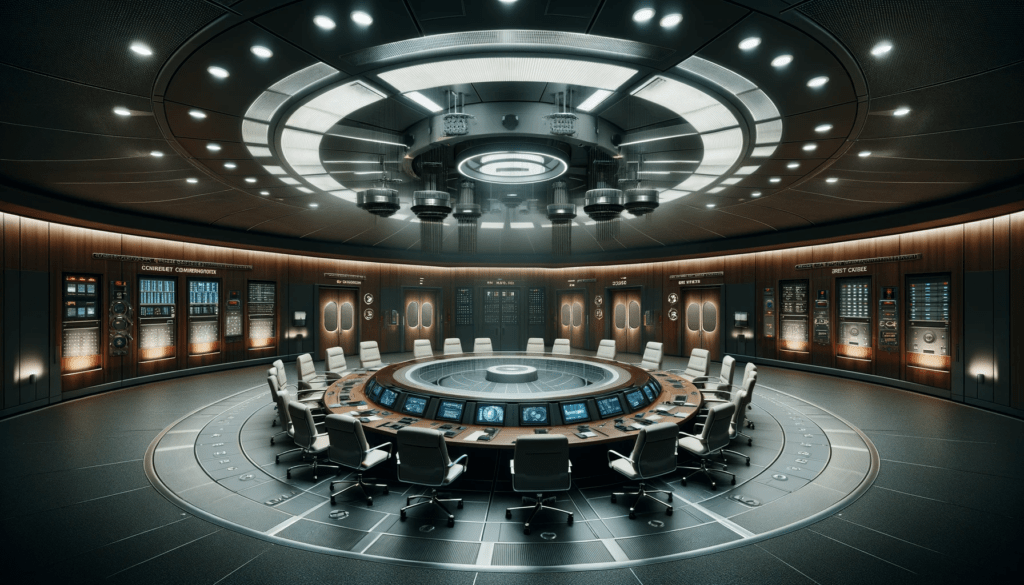Secure Compartmented Information Facility (SCIF)

A Secure Compartmented Information Facility (SCIF) is an enclosed area within a building that is used to process Sensitive Compartmented Information (SCI) types of classified information. SCI is a classification label denoting sensitive government or military information requiring special handling and dissemination controls. SCIFs are required for discussing, handling, and storing classified national security information.
SCIFs have been in operation since the late 20th century and their implementation became increasingly prevalent after the events of 9/11, where the need for more controlled, secured environments for sensitive information became glaringly apparent. These facilities can be found globally, predominantly within the United States in government buildings, military bases, and even within some private sector buildings that engage in government-contracted work. Their locations are typically undisclosed, keeping in line with their purpose of information security.
The ‘why’ behind SCIFs lies in the increasing complexity and sophistication of modern espionage and cyber attacks. With the rise of technology and global interconnectedness, the threat to national security has dramatically increased, making the protection of sensitive information more critical than ever.
A SCIF is constructed following a stringent set of standards outlined in the Intelligence Community Directive (ICD) 705, an unclassified document published by the Office of the Director of National Intelligence. The design of these facilities involves various physical and technical security measures such as soundproofing, RF shielding, and secured communication lines to prevent any unauthorized access or eavesdropping. In addition, access to a SCIF is strictly controlled and limited to individuals who have undergone a rigorous security clearance process.
- “SCIFs can be permanent, temporary, or even mobile.” – (Source: ICD 705, Office of the Director of National Intelligence). This demonstrates the flexibility of SCIFs to adapt to various operational requirements.
- “Even the President of the United States uses a SCIF when traveling.” – (Source: “Protecting Classified Information”, Defense Security Service). This emphasizes the importance of SCIFs in maintaining secure communications at the highest level of government.
- “The design and construction of a SCIF can cost hundreds of thousands to millions of dollars, depending on the size and complexity.” – (Source: “SCIFs: The ‘armored tanks’ of the construction world”, Engineering News-Record).
CIA officer John Sipher in a 2017 interview with NPR, have highlighted the significance of SCIFs by stating how vital they are for ensuring sensitive information does not fall into the wrong hands, thereby protecting national security. This sentiment is mirrored in various books such as “The Unexpected Spy” by Tracy Walder, in which she narrates her experiences working in SCIFs, underscoring their importance in intelligence operations.
While the locations of most Secure Compartmented Information Facilities (SCIFs) are not publicly disclosed for security reasons, there are some known SCIFs due to their inclusion in publicly accessible government buildings or their mention in public records.
A notable SCIF is the one located in the West Wing of the White House, often referred to as the Situation Room. This facility provides secure communications for the President and his staff and is where critical decision-making meetings occur, particularly during crises.
Another known SCIF is located in the United States Capitol building, where members of Congress are briefed on classified information. An example of its use was during the impeachment hearings of President Donald Trump, where closed-door testimonies were held in this secure environment.
Additionally, the intelligence and defense communities have several known SCIFs. These include facilities in the Pentagon, CIA Headquarters in Langley, Virginia, and the National Security Agency (NSA) headquarters in Fort Meade, Maryland.
SCIFs are a vital aspect of information security, contributing significantly to the safeguarding of sensitive compartmented information. They encapsulate the blend of architectural design, advanced technology, and stringent procedural controls, all meticulously woven together to fortify the preservation of critical national security data.

